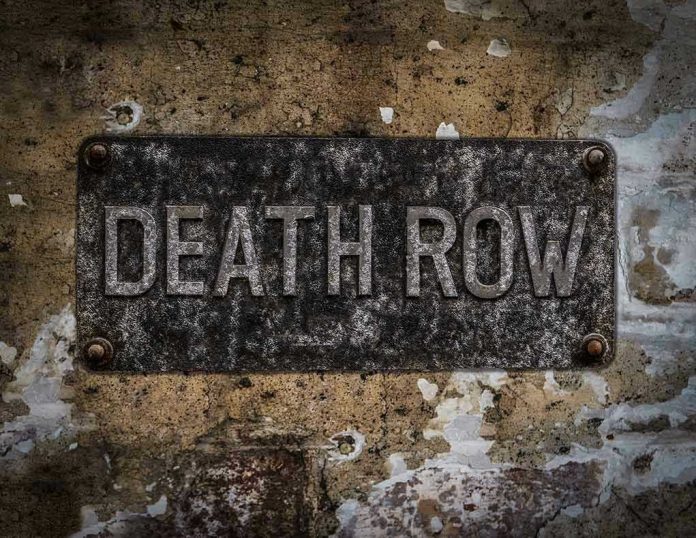
Three decades after a college student’s brutal murder, Mississippi’s death chamber echoed with a condemned man’s serene promise—“I’ll be in heaven”—forcing a reckoning with justice, closure, and the enduring power of final words.
Story Snapshot
- Charles Ray Crawford executed in 2025 for the 1993 rape and murder of Kristy Ray after over 30 years on death row.
- Crawford’s calm final message to his family highlights the emotional complexity surrounding executions.
- Mississippi’s resumption of executions sparks new debate over capital punishment, justice, and closure.
- Prolonged legal battles reveal the cost, impact, and moral dilemmas of the death penalty in America.
Mississippi’s Thirty-Year Wait: Justice Deferred, Justice Delivered?
In 1993, the abduction, rape, and murder of Kristy Ray shattered a Mississippi community and ignited demands for swift justice. Her assailant, Charles Ray Crawford, quickly became the face of evil in the eyes of the public, sentenced to death within a year. Yet, for more than thirty years, Crawford sat on death row, his fate tangled in a web of appeals, legal maneuvering, and shifting cultural winds. The decades-long delay wasn’t just a technicality; it became a test of resolve—for victims’ families, the state, and all who watch the slow-turning gears of American justice.
Crawford’s journey through the legal system mirrored the national debate on the death penalty: is extended incarceration a failure of justice, or a safeguard against irreversible error? Mississippi, a state with a storied past in capital punishment, found itself at the crossroads of an old promise and new scrutiny. The drawn-out process left Kristy Ray’s family in a purgatory of waiting, while Crawford’s own supporters decried the toll of prolonged uncertainty. Ultimately, the execution scheduled for October 2025 was less a sudden event and more the climax of a saga that had gripped and divided a state.
Final Words, Lasting Impact: The Power of a Prisoner’s Farewell
As the hour of execution drew near, Mississippi’s death row was silent but for the words of a man confronting the end. Charles Ray Crawford, once a symbol of violence and loss, became—if only for a moment—a symbol of something else. “I’ll be in heaven,” he told his family, a statement that ricocheted beyond the prison walls. His calm, almost peaceful acceptance unsettled many and offered an unlikely moment of grace in a narrative defined by pain. For Kristy Ray’s family, those words may have stung; for Crawford’s, perhaps, they offered comfort. But for the wider public, they invited reflection: what, if anything, is resolved when the state carries out its harshest sentence?
The Mississippi Department of Corrections, tasked with the solemn logistics of execution, released official confirmations and statements. The event attracted attention not only for its gravity but for its rarity—Crawford’s execution was only the second in the state that year. Each time the state acts, it reopens old wounds and rekindles debates about justice, closure, and the possibility of redemption, however faint. The spectacle of a final statement—especially one so serene—underscores the emotional complexity that the death penalty brings to all involved.
Capital Punishment Under Scrutiny: Cost, Closure, and the Price of Delay
Mississippi’s capital punishment system has weathered decades of controversy, with each execution reigniting questions about its purpose and efficacy. The Crawford case is emblematic: a crime so heinous it shocked the conscience, an investigation and trial that seemed to promise swift justice, and then, decades of legal wrangling. The financial and emotional costs mounted with every year Crawford remained on death row. For Kristy Ray’s loved ones, closure was deferred again and again by appeals, reviews, and the slow churn of bureaucracy.
Legal experts point out that such delays are not unique to Mississippi but endemic to the American death penalty system. Proponents argue that executions like Crawford’s deliver long-overdue justice and deterrence. Opponents, however, question whether the system’s protracted nature serves anyone—least of all the families who must relive the trauma with every new development. The social and political ramifications ripple outward: state officials face scrutiny for every decision, advocacy groups mobilize for or against, and the broader public is left to weigh the cost of retribution against the ideals of fairness and mercy.
What Remains: Memory, Debate, and the Shadow of the Gallows
With Charles Ray Crawford’s execution, Mississippi closed a chapter that began in grief and ended in ritual. The immediate impact is most keenly felt by those closest to the crime—Kristy Ray’s family, whose decades-long vigil ended not with jubilation, but with the quiet exhaustion of an ordeal finally over. For Crawford’s loved ones, the end brings its own kind of reckoning. In the aftermath, Mississippi finds itself once again at the center of a national conversation about the death penalty: its costs, its consequences, and its elusive promise of justice.
The state’s history with capital punishment, the high-profile nature of the case, and the emotional resonance of a condemned man’s final words guarantee that the debate will not fade. Each execution sets a precedent, influences policy, and shapes public attitudes for years to come. The shadow of the gallows lingers, forcing Mississippi—and America—to confront the hardest questions about justice, closure, and what, if anything, lies beyond the final words of the condemned.
Sources:
Mississippi Department of Corrections













